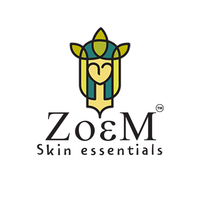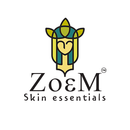While you are sleeping: 9 products that will transform your skin
Skin, the largest organ of the body, functions as the necessary interface between the internal and the external environment. Thus, it continuously protects the body from noxious stimuli, e.g., microorganisms, ultraviolet (UV) irradiation, allergens, and irritants. Its unique role and function is a direct result of its structure and makeup, particularly of the most superficial part, the epidermis. The main cellular component of the epidermis includes keratinocytes, but there are also melanocytes, Merkel cells, gamma delta T-lymphocytes, and Langerhans cells. Keratinocytes in the basal layer of the epidermis preserve their ability to proliferate upward to form the spinous layer and the granular layer. Beyond the granular layer, the keratinocytes terminally differentiate into corneocytes in the horny layer. In the outmost part of epidermis, corneocytes (compact keratinocytes without nuclei), together with the intercellular lamellar compartment (lipids), contribute to the structure and function of the stratum corneum (SC).
Many times, over years, even before I was a herbalist, I would wonder if there is need to extra moisturise before bed or shud I put any lotion before bed on my body just to maintain skin health. I did it anyways, though I always felt that my pores were getting clogged -but that's the same if I moisturised any other time of the day!!
There are only two psychological differences I observed- Firstly, if we do it in the night- we tend to be not worried about our face because we sleep over it. Secondly, we leave it untouched and unexposed to all types of pollution and stress, which is so kuch better when you use any types of skin care. Biologically and dermatologically, there is really just time period gaps needed between skin care routines.
With time and exposure to UV and pollution, hormonal imbalances, lifestyle and stress, our skin loses its natural charm- hence dark spots, lines, wrinkles, pigmentation, blemishes start appearing and overnight skin care becomes all the more important as that is the only time your skin can be at peace! Quiet literally!
The degradation of our skin can be discussed as two entities: chronological and environmentally- influenced.
Clinically, chronological and environmentally-influenced show skin changes including thinning, loss of elasticity, roughness, wrinkling, increased dryness, and impairment of the skin barrier. Chronological changes depend on a decrease in cellular replacement (senescence) of the epidermis, dermis, and hypodermis, but also from impairment in the remodeling of the extracellular matrix (e.g., collagen bundles and elastic fibers). The second type of skin degradation is mediated by extrinsic factors such as UV radiation, air pollution, smoking, changes in external temperature, and other agents of skin aging like photoaging by chronic exposure to UV radiation - which includes dyspigmentation (mostly lentigo and freckling), solar elastosis, actinic keratosis, and seborrheic keratosis. Photoaging is attributed to photo-oxidative damage to skin, mainly by high levels of ROS induced by UV radiation. ROS result in collagen degradation and its accumulation in the dermis, also known as solar elastosis. ROS levels are regulated by anti-oxidant enzymes in skin such as superoxide dismutase (SOD), catalase (CAT), and glutathione (GSH). If anti-oxidant defenses are overwhelmed after extensive UV light exposure, ROS production exceeds the capacity of antioxidant defenses in the skin. This causes oxidative stress, which damages skin cells and alters their gene expression, leading to photoaging- it also promoting cutaneous carcinogenesis (non-melanoma and melanoma skin cancers).
Hence, we can conclude that skin degradation is a complex process involving various genetic, environmental, and hormonal mechanisms. One can differentiate between intrinsic, chronologic degradation and extrinsic, “environmental” degradation; both processes occur in conjunction with the other and are superimposed on each other. Free radicals play a central role in the course of both intrinsic and extrinsic degradation and in a way, daily overnight skin treatment becomes crucial. During the chronologic aging process, free radicals are formed naturally through normal human metabolism, whereas, in the extrinsic aging process, they are produced by exogenous factors, such as UV exposure, cigarette smoking, and alcohol consumption. At least 50% of UV-induced damage to the skin is estimated to be attributable to the UV-induced formation of free radicals. Harman, et al. first proposed this “free radical theory of aging” in 1956, and today it is one of the most widely accepted theories used to explain the cause of skin aging. Free radicals are highly reactive molecules with an odd number of electrons that are generated from oxygen; they can damage various cellular structures, such as DNA, proteins, and cellular membranes. In addition, free radicals may lead to inflammation, which seems to play an additional role in skin degradation.
Lets find out secret ingredients you should look out for that can transform your skin while you sleep.
-
Rosehip seed oil-I have written a separate blog on rosehip- the herb is so beautiful. Well, all I can say is the scars on your face that sat for years and years, the stubborn acne, the wound marks- rosehip seed oil is all you need. There is extensive research done on it. Read more here https://zoemskin.com/blogs/news/rosehip-oil-benefits-for-skin

-
Green tea- Flavonoid compounds with phenolic structures are phytochemicals that are highly reactive with other compounds, such as reactive oxygen species and biologic macromolecules, to neutralize free radicals or initiate biological effects. A short list of phenolic phytochemicals with promising properties to benefit human health includes a group of polyphenol compounds, called catechins, found in green tea.It is chemopreventive, naturally healing, and anti-aging for human skin.

- Cornflower-Using cornflowers will help with tired, itchy and puffy eyes and have a toning and cooling effect- on the skin.
- Yarrow-this potent little hedgerow herb is distilled to make an essential oil packed with a compound called chamazulene, which exhibits anti-inflammatory and anti-allergenic properties. Yarrow is famous in folklore for stopping the bleeding of wounds and nosebleeds. It is considered good in the care of oily and acne-prone skins.
- Wild carrot (Daucus carota)-One of my favourite herbs,carrot’s seed is distilled to create an earthy essential oil which is great for mature skin. It is said to stimulate circulation, repair and tone the skin, increase elasticity, as well as reduce the formation of wrinkles and scars.
- Calendula macerated oil- has antifungal, anti-inflammatory, and antibacterial properties that can soothe eczema and severe breakouts. It also beautifully heals any wounds on skin.
-
Evening primrose oil-This potent flower’s oil soothes and moisturizes the skin, scalp, and hair while enhancing elasticity. Furthermore, it promotes a healthy, clear, rejuvenated complexion.

- Jojoba oil-Vitamin E and B-complex vitamins in the Jojoba oil help in skin repair and damage control. You can use it as a lip balm to soothe dry, cracked lips, or you can apply it all over your face before bed as an anti-aging serum.
- Allantoin-Allantoin protects against UV-induced cell damage (Zasshi, 1998). All of It is a great anti-ageing cosmeceutical.
Hop on my quick 3 step note, here to understand how you can use any of these beautiful products that I mentioned above
https://zoemskin.com/blogs/news/quick-effective-3-step-night-routine
Happy Skin!
Vibhuti





Leave a comment